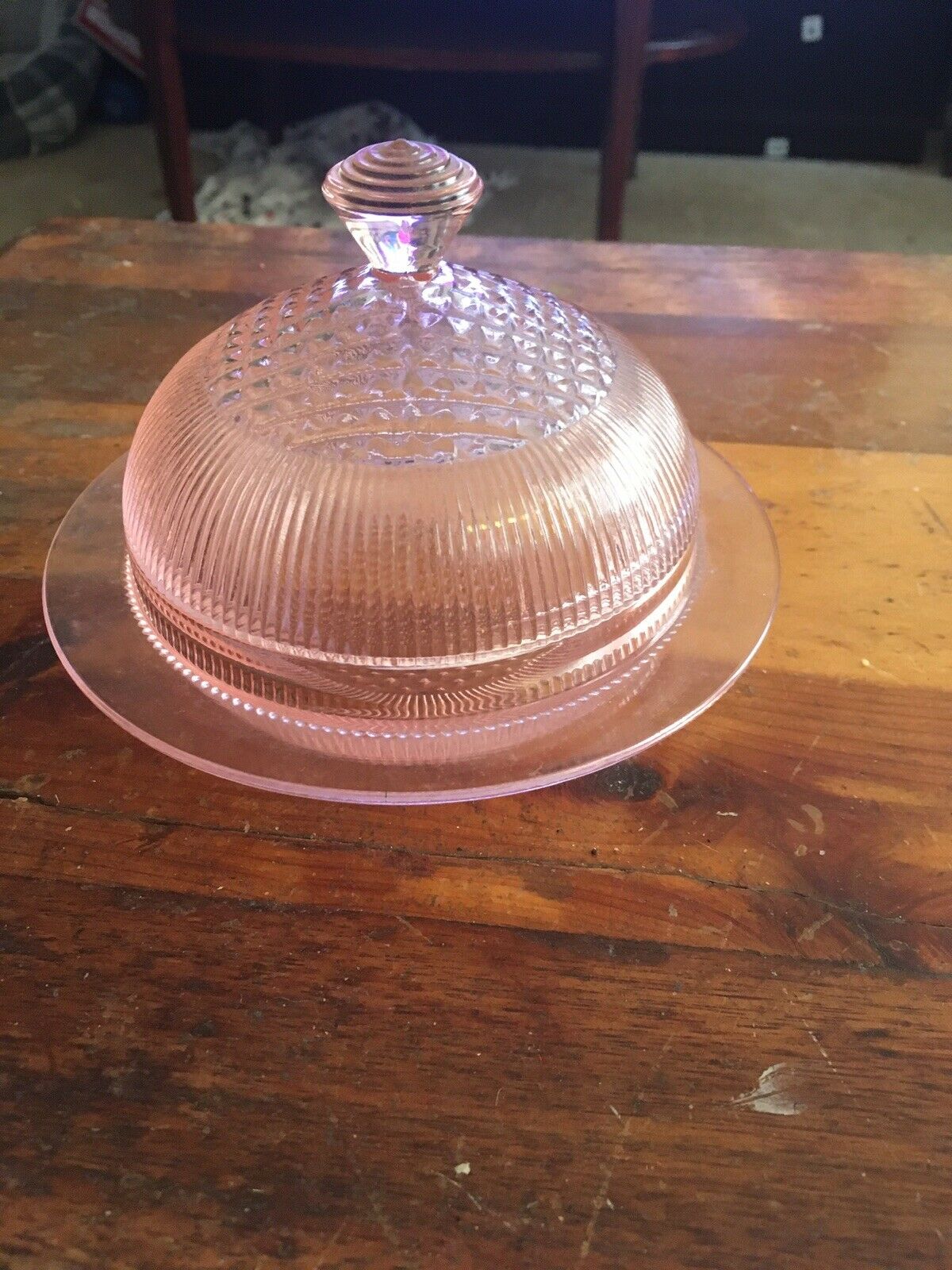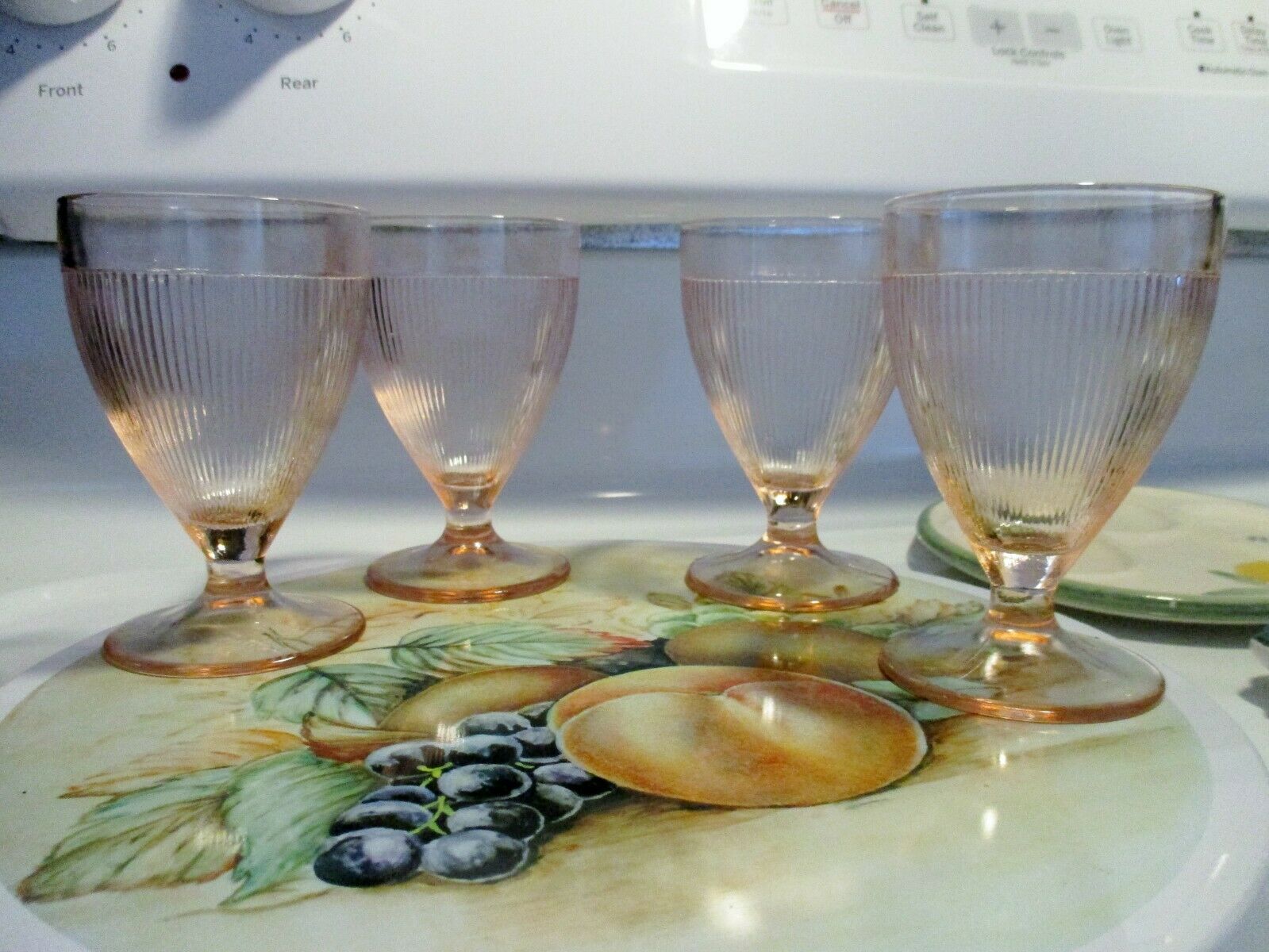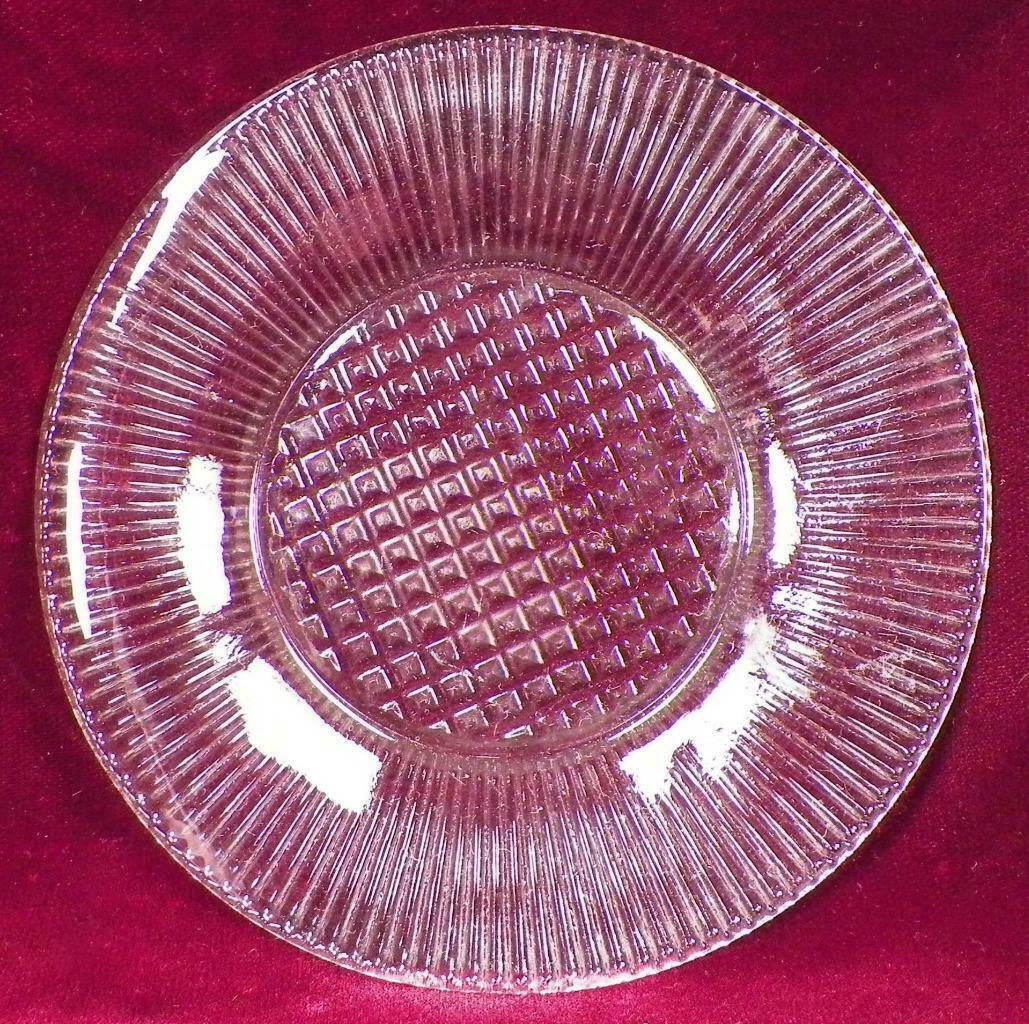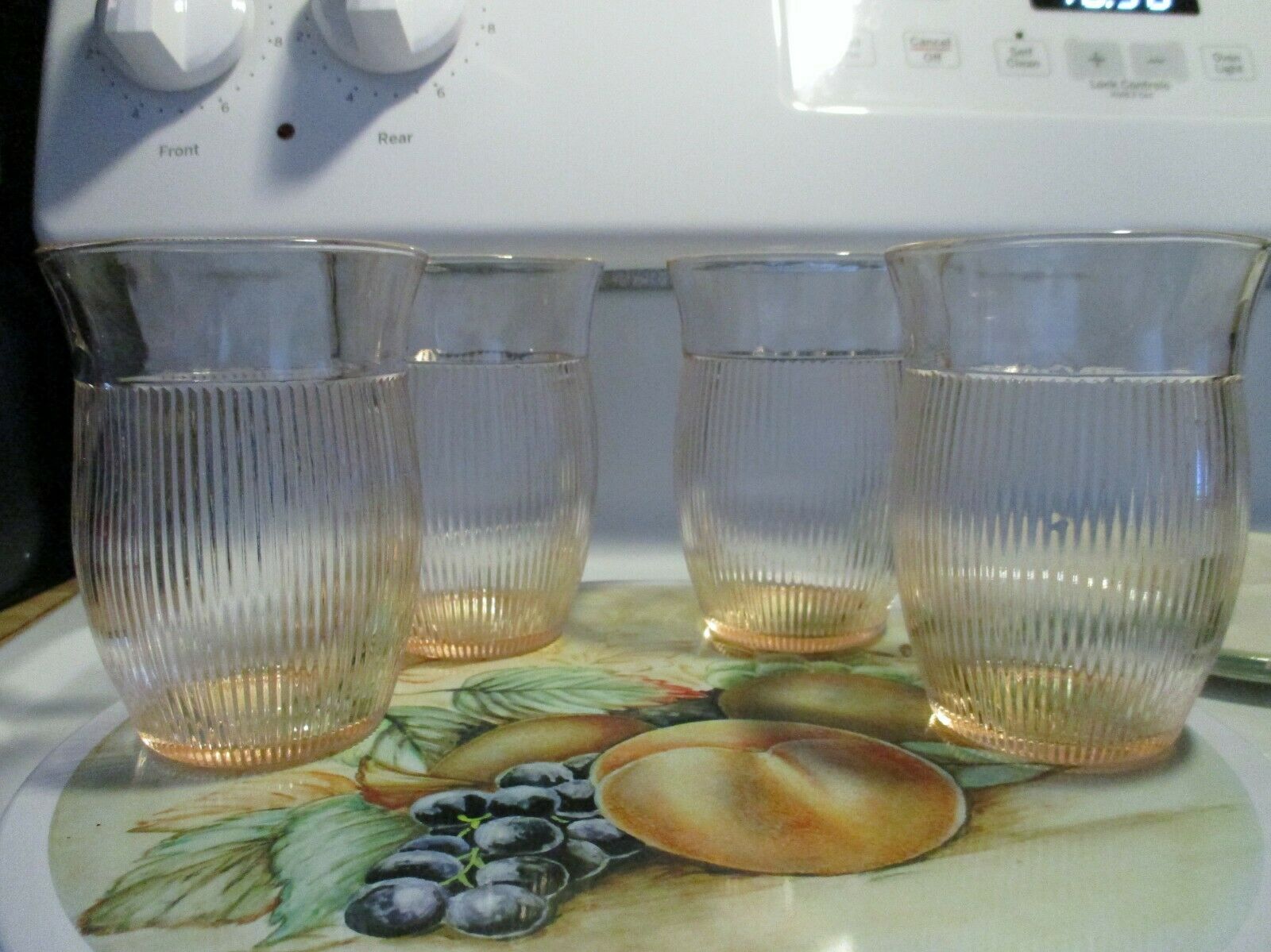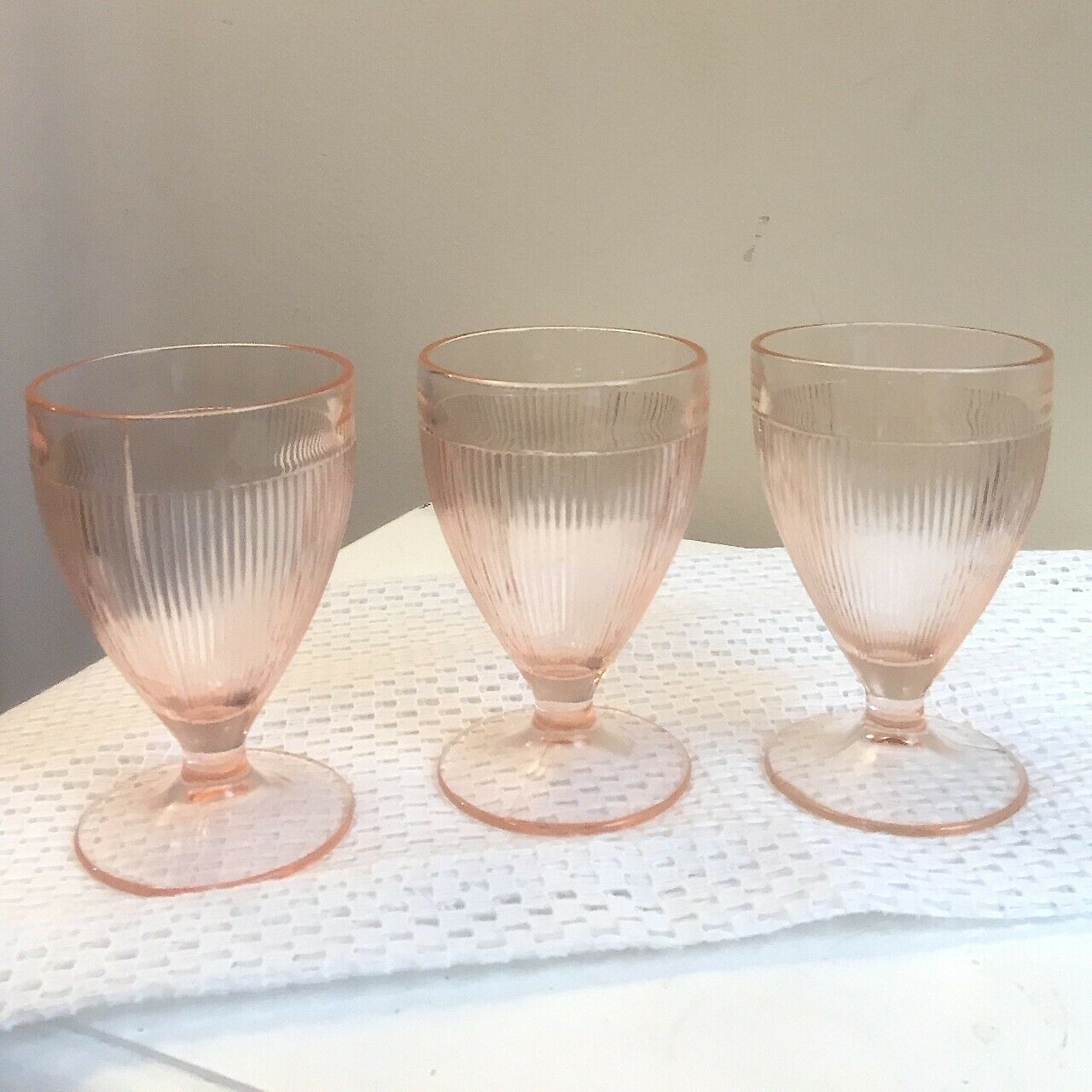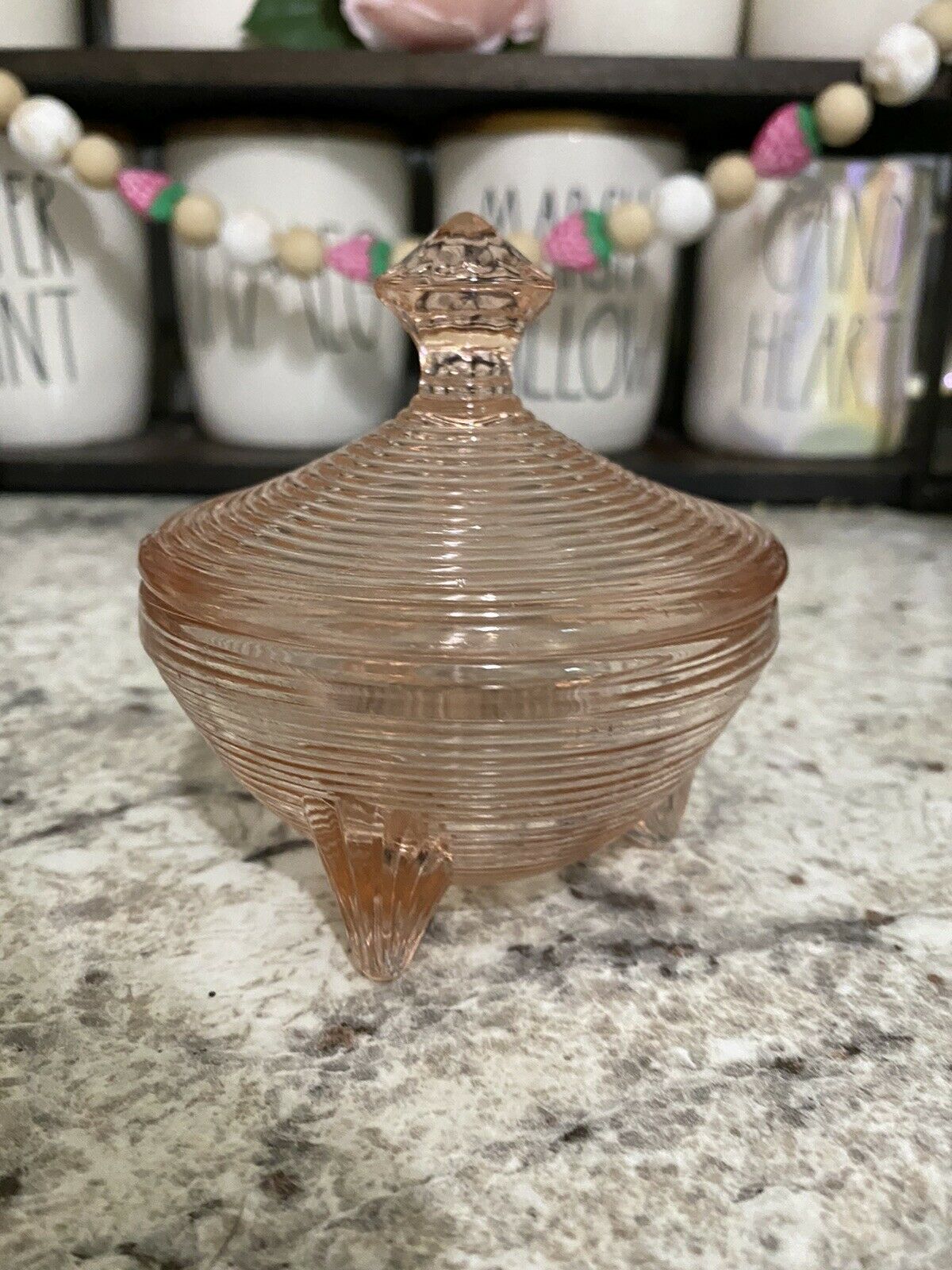-40%
PINK JEANETTE DEPRESSION GLASS HOMESPUN SMALL SERVING BOWL
$ 8.94
- Description
- Size Guide
Description
PINK JEANETTE DEPRESSION GLASS HOMESPUN SMALL SERVING BOWLAll pictures are of the items that are listed, everything is from a smoke-free pet-free environment!!
JEANETTE GLASS – A COMPREHENSIVE HISTORY AND PATTERNS LISTING
Depression Glass | March 17, 2015 | Blog | No Comments
The Jeanette Glass Company, like most companies who survived the Great Depression, has quite an interesting history. The company began in 1887, in the town of Pennsylvania that shares the company’s name, as a simple bottle company. The company produced handmade bottles under the business name “Jeanette Bottle Works Company.” Two years later, they took advantage of modern machinery advances and became known as Jeanette Glass Company, the name the company retained for most of its history.
Jeannette Glass Pitcher
Iris and Herringbone Pattern
With technological advances throughout the years, they began adding jars to their list of products, medical supplies and even headlights for automobiles. In the 1920s, something happened that forever changed Jeanette Glass.
Most of the country was on the verge of an economic crisis, and women were finding it difficult to set aside money for home décor. Depression glass came to the rescue, as it was brightly colored almost like pieces from Tiffany, but it could be purchased cheaply due to its production methods. Carnival glass was emerging in a similar fashion and appealing to the same crowds for the very same reason. Depression glass was often given away with purchases at fuel stations or grocery stores, and a full set could be obtained quite cheaply or even for free. As many from the era stated, the glass was a simple way to enjoy luxuries that weren’t available to many at the time. Eating dinner off of a beautiful dish was a reminder of pleasant times ahead and a reminder to appreciate the simple things. Some white pieces were treasured as if they were the porcelain they appeared to be, while others had an almost crystal-like appearance. Suddenly, middle class women had a fancy place to store their cosmetics, candies, or anything else that may normally lie on a counter unadorned.
Long after Depression glass saw its peak, Jeanette Glass Company purchased McKee Glass factory, located in the same town, in the 1960s.
PATTERNS AND COLORS OF DEPRESSION GLASS BY JEANETTE GLASS
Below is a list of some of the patterns and colors, according to www.carnivalheaven.com, that were produced by Jeanette Glass Company throughout their years of operation.
Jenny Ware – produced in green and blue
Adam – produced in blue, pink, crystal, yellow and green
Anniversary – pink and platinum, gold or crystal
Floragold – marigold iridescent
Baltimore Pear – crystal
Feather – crystal, blue or crystal trimmed with gold
Butterfly – crystal (the trim is gold, and some have iridescent golden hues)
Camellia – produced in crystal or crystal trimmed with gold
Cherry Blossom – blue, green, jadeite, pink, crystal and yellow
Sunflower – green, pink or blue
Crackle – iridescent marigold
Cube – amber, yellow, blue, green, pink, red, “ultramarine,” Milk Glass or crystal
Dewdrop – crystal
Iris and Herringbone – two-toned blue and green, green, gold iridescent, pink, frosted two-toned red-yellow, “ruby flash” trimmed in gold, amethyst, crystal, two toned green-yellow, Milk Glass, two-toned red-yellow, blue or “ruby flash”
Diamond Point – amber, amethyst, green, blue, red, crystal, amberina or teal.
National – crystal trimmed with gold, “ruby flash,” or crystal Doric and Pansy – pink, blue, yellow, crystal, teal or gold iridescent
Floral (Poinsettia flower) – amber, green, pink, crystal, blue, jadeite or yellow
Glassbake – Milk Glass or crystal
Gondola – blue, marigold iridescent, crystal trimmed with gold or Milk Glass
Hellenic – blue, green, cranberry or Milk Glass
Hex Optic – crystal, gold incandescent, “ultramarine,” green or pink
Holiday – crystal, pink or gold iridescent
Egg Nog – marigold iridescent
Homespun – pink, yellow or clear
Wedding – blue, crystal trimmed in gold, marigold iridescent, amberina, crystal, green or red
Lombard – Milk Glass, two-toned blue-green, green, crystal, amber, gold trim and gold iridescent
Louisa – blue, crystal, pink, amerbina, two toned blue-green or gold iridescent
Shell Pink Milk Glass – pink
Venetian – gold
Sierra – pink, “ultramarine,” or green
Sunburst (Herringbone) – crystal
Thumbprint – crystal trimmed with gold, amber or crystal
Swirl – blue, pink, amber, ice blue or “ultramarine”
Tree Bark (and Tree Park Variant) – crystal, marigold iridescent
Windsor – blue, ice blue, marigold iridescent, green, crystal, Milk Glass, pink, red, yellow or amber
Though pieces produced outside the depression era are still often called “Depression glass,” the glass produced during the era tends to be in higher demand and generally of more value.
PERHAPS PIECES PRODUCED OUTSIDE OF THE GREAT DEPRESSION AREA SHOULD BE NAMED OR REFERRED TO AS “IN THE
STYLE OF” DEPRESSION GLASS
Jeanette Glass Company produced 14 patterns during this time. The company manufactured dinnerware and glassware. Though many pieces were not marked with a manufacturers stamp, a quick research on the patterns will help one determine if it is a genuine Jeanette Glass piece. Those that are marked are usually seen with a capital J. Sometimes the symbol is enclosed with a box or triangular shape.
A book such as Warman’s Depression Glass : Identification and Price Guide will help the avid collector to identify genuine Jeanette Glass items.
The company had a boom near the end of World War II, and by the 1960s, they were the world’s largest electric furnace that melted “heat resistant” glass.
However, by 1983, the company experienced a downturn, and Jeanette Corporation, once known as The Jeannette Glass Co , was in trouble. Citing an economic downturn in the market, the Jeannette Glass closed its doors in 1983.
BOX 87
9/8/19






